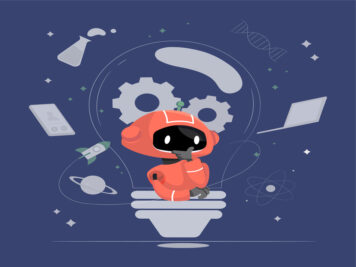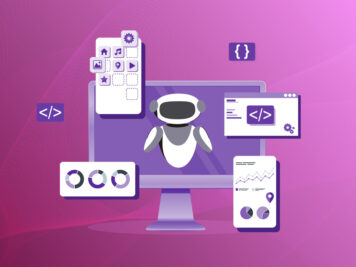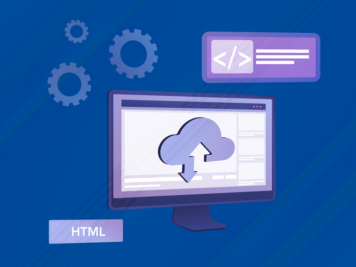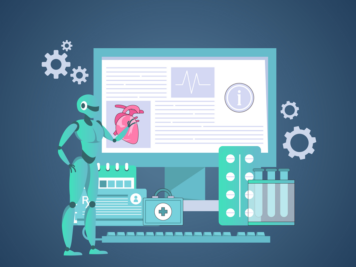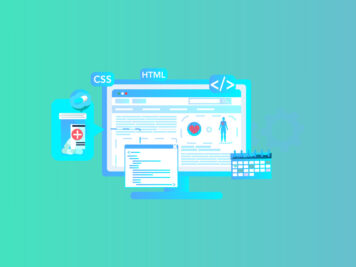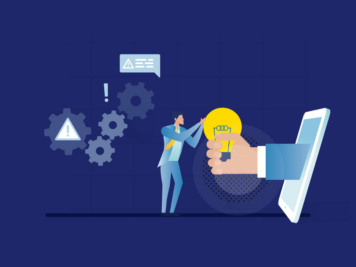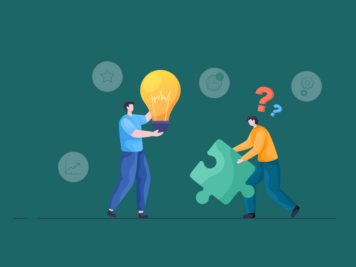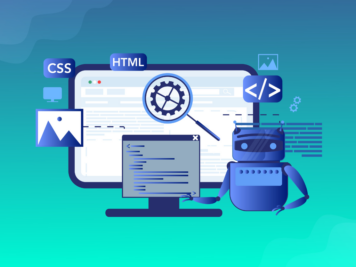Software architecture has evolved significantly in the past couple of decades, influenced by the types of software systems required and the state-of-the-art technology available at the time. It began with monolithic architectures and their variations, such as distributed monoliths and modular monoliths. This evolved into Service Oriented Architecture (SOA) and Microservices. Currently, the landscape is rapidly changing with advancements in AI, and the latest development is the multi-AI agent system.
Multi-AI agent divides to conquer. It breaks down the overall activity into tasks that specialists can perform. Then, it employs specialists to complete the job. They offer businesses increased resilience, flexibility, cost-effectiveness, and innovation, all necessary for a competitive edge. Industries benefit significantly: marketing gains deeper consumer insights and automates campaigns, finance benefits from early fraud detection, and retail optimizes supply chains. These applications highlight the transformative potential of multi-AI agent systems across various sectors.
But just because it is getting the hype doesn’t mean it is perfect for adoption. A brief overview of multi-AI agents’ architecture, technologies, applications, challenges, and trends is essential for informed decision-making about this evolving technology.
Understanding Multi-AI Agent
Large language models (LLMs) are the core of Generative AI, trained on extensive data and fine-tuned for specific tasks to enable natural language understanding and insights. However, LLMs can sometimes produce hallucinations. To counter this, developers use Retrieval Augmented Generation (RAG), which relies on external knowledge bases for accurate results.
But agentic workflows are different. Here, developers make iterative calls to LLMs before they arrive at their desired result. The results are far better than the previous approaches.
AI agents, which are goal-driven, interact with their environment, collect data, and use it for decision-making through iterative LLM calls. Here are some of the most popular ones.
Reflection
A prompting strategy, Reflection, improves the quality of agents and other AI systems and increases their success rate. The LLM reflects on its work to enhance it further, which can also be achieved using a different LLM.
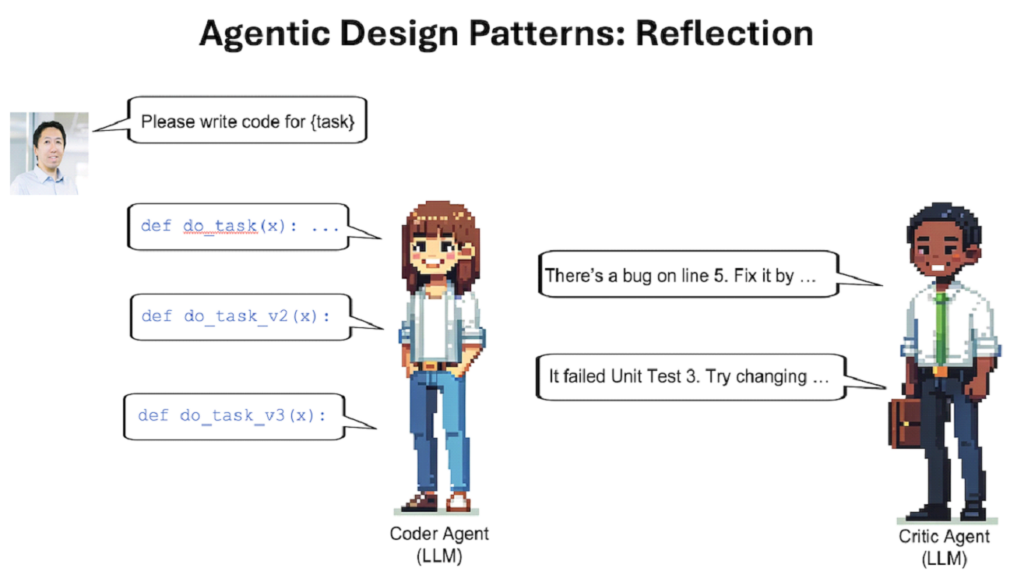
Tool Use
This agent uses some external function to gather information, process data, or take actions when necessary.
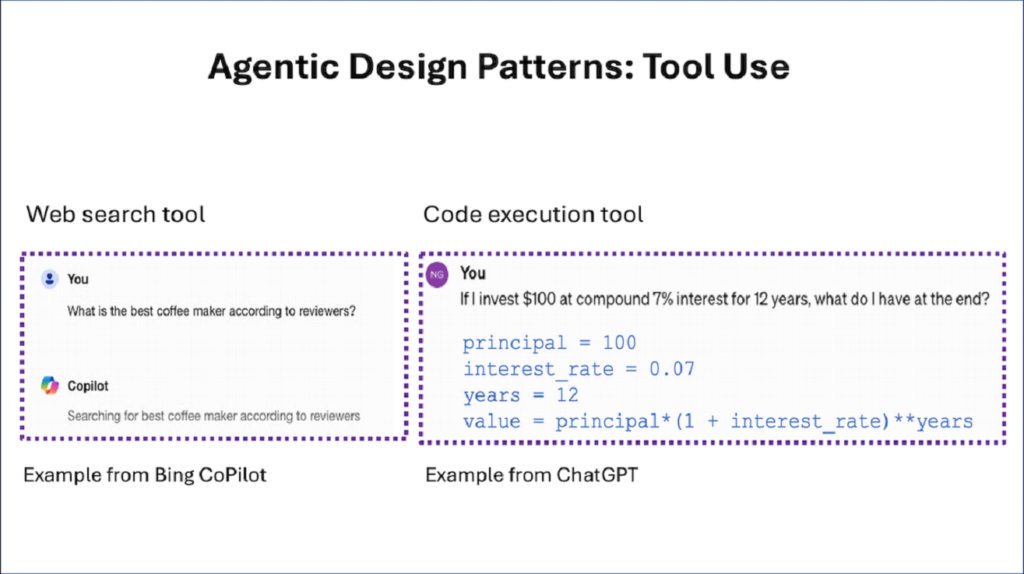
ReAct
The tool is founded upon the reasoning and act pattern, where the LLM typically does the reasoning and a tool takes the action.
Plan-and-execute
For certain activities, making an overall plan and executing every step of the plan is better. It can also lead to replanning at every stage of the execution.
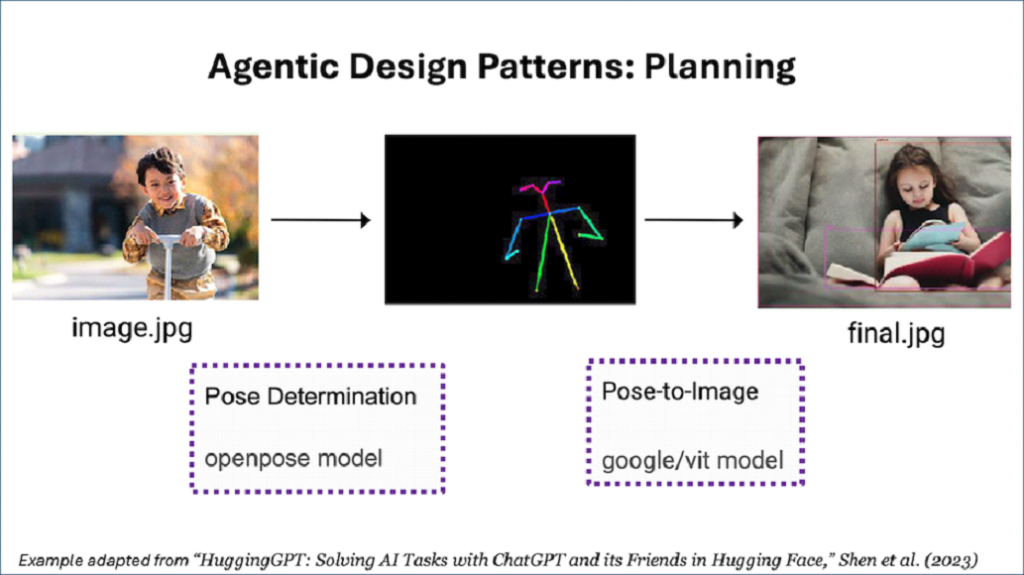
The overall activity is broken down into two steps: determining the pose and drawing the girl in that pose.
ReWOO, LLMCompiler
There are some advanced patterns like React WithOut Observation and LLMcompiler that are evolving to optimize the number of tokens reducing the overall cost.
Characteristics of Multi-AI Agent
Multi-AI agent systems are becoming popular for their proven advantages. They are starkly different from others in terms of specialization, independence, and coordination and collaboration.
- Specialization
Each AI agent is designed for a specific task or function to perform efficiently in a multi-AI agent system. For instance, one agent might excel at natural language processing while another focuses on data analysis. This specialization allows each agent to perform its designated tasks with high precision and effectiveness.
- Independence
It makes the system more precise and effective in handling complex activities. They are independent and operate autonomously, and they are very effective in a dynamic and fast-paced environment.
- Coordination & Collaboration
Multi-AI agents can also work together seamlessly, coordinating and collaborating to achieve common goals. It ensures that tasks are completed efficiently and accurately and is the most recent and widely adopted approach. For instance, product managers gather customer requirements, and developers write code. These specialists collaborate as a team, enhancing overall performance. Their collaboration, which can be sequential, hierarchical, or delegated, is key to delivering results.
Patterns of collaboration are still evolving. The approach is flexible in terms of the types of each agent and the total number of agents to employ. However, there is a downside. This approach can be time-consuming and costly.
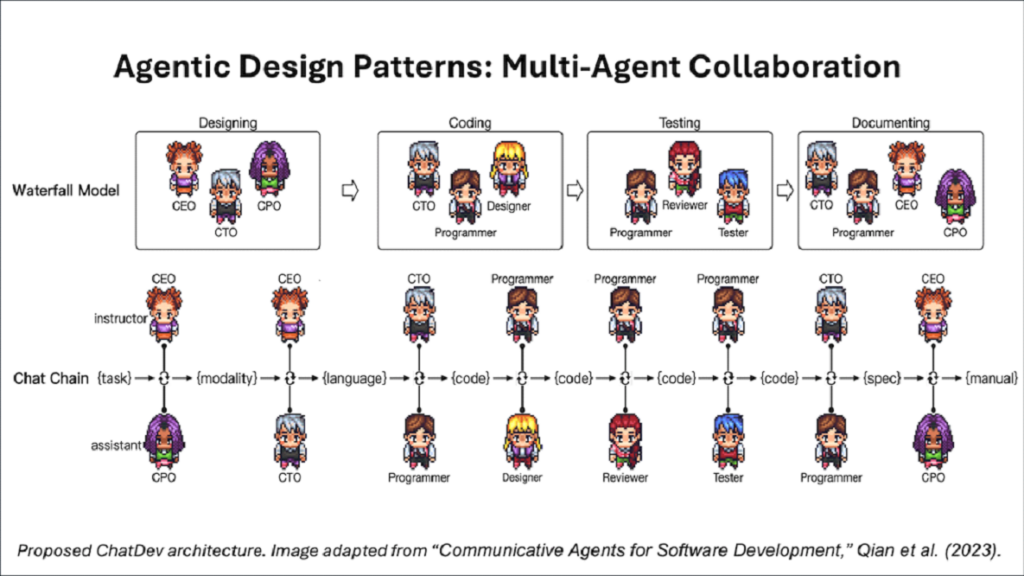
Benefits of Using Multi AI Agents
In an AI ecosystem, efficiency, flexibility and scalability matter as the failure rate of AI/ ML models are quite high. With the recent inclusion of GenAI and the buzz around it, achieving these three has become all the more necessary for any business interested in adopting the tech. That is why multi-AI agent uptake is experiencing a surge.
- Efficiency
Multi-AI agents enhance efficiency by distributing tasks among specialized agents. Each agent handles tasks it is best suited for. This ensures quicker and more accurate completion. The division of labor reduces bottlenecks and optimizes resource utilization, which leads to faster and more streamlined operations.
- Flexibility
Multi-AI agents are flexible enough to adapt to any changing requirements and environments. This is mostly due to each agent’s independent nature. The flexibility allows businesses to respond swiftly to market changes and evolving customer needs.
- Scalability
Multi-AI agent systems are inherently scalable. New agents can be added as demand grows to handle increased workloads without disrupting the existing system. This scalability ensures that businesses can expand their operations and manage larger volumes of work efficiently.
Architecture of Multi-AI Agents
Conceptually, multi-AI agent systems can be linked with Marvin Minsky’s classic The Society of Mind. In that 1986 classic, he explained how thousands of modular minds working together are better than a single monolithic mind. However, the success of such a design depends on its robust architecture.
Here is a diagrammatic depiction of this latest architecture:
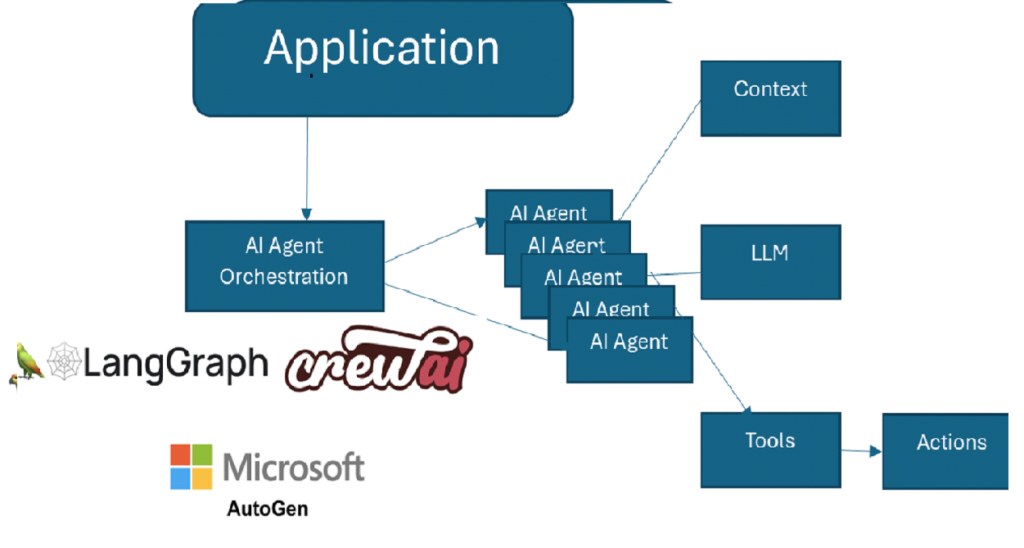
Breaking down the business into independent workflows is the right way to build this kind of system. Each of these workflows then becomes a team or crew, which developers implement using the multi-AI agent workflow. For each workflow, the decision is made on what expert agents to employ. For each agent, there is the flexibility to choose the type of agent depending on the job at hand.
A complete understanding of a multi-AI agent system requires know-how of its 3 pillars: core components, system design principles, and integration strategies.
Core Components of Multi-AI Agents
AI agents, communication protocols, and coordination mechanisms form the core of any multi-AI agent system.
AI Agents
AI agents are autonomous systems that deliver tasks in which they specialize without any human intervention. In a multi-AI agent system, when these individual agents work, they require a set of communication protocols to ensure they can make decisions collectively. Goals in this system should not be conflicting, or else it can lead to competition.
Communication Protocols
The degree of flexibility and autonomy of the system’s agents control the communication protocols. The protocol includes the semantics, syntax, and rules of the messages or signals. The syntax is the structure of the symbol, and semantics refer to what those symbols mean. A combination of these three helps gather and transfer information.
Protocols are of two types: Predefined and Emergent. Predefined protocols, developed by programmers, are updated externally and often based on languages like FIPA-ACL and KQML. Emergent protocols, developed by the agents via reinforcement learning, adapt dynamically based on environmental changes and agent capabilities. These adaptive protocols ensure system responsiveness to new challenges, include error-handling mechanisms for uninterrupted communication and are designed to be scalable and efficient. They monitor and manage communication, detecting traffic issues and optimizing parameters. Security measures such as encryption and authentication protect the integrity, authenticity, and confidentiality of messages.
Coordination Mechanisms
Coordination is crucial, as the division of labor can only ensure the efficacy of the completed task. It also enables real-time data sharing and decision-making for more informed strategies and actions. In a dynamic environment like financial trading or driving, coordination becomes all the more important. Advanced protocols like TCP/IP and MQTT enable reliable and efficient information exchange between agents. These agents use reinforcement learning to learn optimal strategies through trial and error.
When efficiency is needed, developers tend to adopt centralized coordination. However, this has a drawback: a single point of failure. A decentralized system is more resilient and scalable.
System Design Principles
Adhering to system design principles is essential, as they drive the system’s scalability and reliability. When building a multi-AI agent environment, developers must consider modularity, interoperability, and robustness.
Modularity
Modularity simplifies development, testing, and maintenance by allowing capabilities to be added or adjusted without overhauling the entire system. It also makes troubleshooting more efficient, as problems can typically be isolated to specific agents.
Interoperability
Standard communication protocols facilitate seamless interaction and coordination between diverse agents developed by different teams or organizations.
Robustness
It depends on multiple factors. Redundancy is needed to ensure multiple agents can perform the same task to minimize the risk of failing. There should be a continuous monitoring system as well to detect anomalies and initiate self-repair mechanisms. Agents should be able to handle errors better and work under suboptimal conditions. Testing the system to identify potential pitfalls should also be a part of the design.
Adaptive algorithms can be incorporated to let the agents adjust their behavior in real-time, further improving the system. Graceful degradation and fallback options should also be part of the environment. The first allows the system to continue operating even when some agents fail, and the second provides opportunities to stay on track by overcoming obstacles.
Integration Strategies
Integrating multi-AI agent systems with robust design principles is crucial for achieving high performance and reliability. Middleware solutions and standardized communication protocols, such as FIPA-ACL, ensure seamless interaction between diverse agents, enhancing interoperability. By employing a modular and service-oriented architecture, agents can be developed, tested, and maintained independently, allowing capabilities to be added or adjusted without overhauling the entire system.
Furthermore, strategies like using message-oriented middleware (MOM) for asynchronous communication and implementing shared data repositories enable efficient data sharing and collaboration. Containerization and orchestration tools, such as Docker and Kubernetes, facilitate scalable and consistent deployment, optimizing resource utilization and ensuring fault tolerance.
These integration strategies not only improve the flexibility and adaptability of the system but also enhance its robustness and resilience, ensuring continuous operation and reliability in complex, dynamic environments. By incorporating strong security measures and monitoring tools, these systems can effectively protect against threats and maintain the integrity and availability of data, fostering a reliable and secure multi-AI agent ecosystem.
Applications of Multi-AI Agents
In a multi-AI agents system, the core intelligence of large language models (LLMs) drives the concept of AI agents. AI agents build structures and flow around LLMs to unlock the AI potential so that it can act autonomously. Various domains can benefit from this system as it provides scope for versatility and potential to transform industries.
Healthcare
In healthcare, patient care and medical research can leverage multi-AI agent systems. For instance, AI agents in the system can work together to analyze medical images, cross-referencing findings to improve diagnostic accuracy. An agent with skills to detect tumors in X-rays can team up with another agent focusing on analyzing MRI scans. Their combined insights can make diagnoses and treatment plans more reliable. Additionally, these systems can monitor patient health in real-time, alerting medical professionals to any anomalies and suggesting interventions based on collective analysis.
Smart Cities
Multi-AI agent systems can be a huge boost for smart cities. The technology can aid the growth of this sector by managing and optimizing various pivotal urban functions, such as traffic control, energy distribution, and public safety.
Traffic management agents can coordinate to minimize congestion by adjusting traffic signals and suggesting alternative routes. Energy distribution agents can balance supply and demand, ensuring efficient resource use. Public safety agents can monitor surveillance feeds, detect unusual activities, and coordinate with emergency services for rapid response.
Autonomous Vehicles
Each autonomous vehicle operates with its own AI agent, and these agents can communicate with one another to ensure safety and efficiency on the road. By sharing information about traffic conditions, obstacles, and optimal routes, these cars can allow fleets to navigate seamlessly. Such a collaborative approach reduces the risk of accidents, improves traffic flow, and enhances the overall transportation experience.
Financial Services
Multi-AI agent systems can make trading, fraud detection, and customer service more effective. Trading bots operate as independent agents, analyzing market trends and executing trades based on predefined strategies. By collaborating, they can diversify investment portfolios and reduce risk. AI agents can also analyze different aspects of transactions, such as behavioral patterns and transaction history, to identify suspicious activities.
In customer service, AI agents can handle various queries simultaneously. They can improve the response time and accuracy.
Robotics
Multi-AI agent systems can simplify complex tasks through the collaboration of multiple robots. For example, in a warehouse setting, robots equipped with AI agents can work together to fulfill orders. Brands like Walmart or Amazon can significantly improve their delivery times by increasing the adoption of multi-AI agent systems. By dividing tasks and sharing information, robots can operate more efficiently and complete tasks faster than a single robot working alone.
Supply Chain Management
Supply chain management is a sector where multiple departments, like inventory management, demand forecasting, and logistics optimization, come together to make the entire system more effective. Such an industry can benefit significantly from multi-AI agent systems. By working together, AI agents can predict demand more accurately, manage stock levels efficiently, and ensure timely product delivery. This type of coordination minimizes costs and reduces the likelihood of disruptions, making the supply chain more resilient and responsive to market changes.
Challenges and Solutions in Multi AI Agent Systems
The implementation of a multi-AI agent system has certain challenges. Addressing them in time or considering them before starting the implementation process is crucial for realizing the full potential of such systems.
Coordination and Communication
Multi-AI agent systems require effective coordination and communication among agents. But maintaining that is a challenge. Poor communication can lead to conflicts, redundancies, and inefficiencies. Implementing robust communication protocols and frameworks is essential. Standardized communication languages like the Foundation for Intelligent Physical Agents (FIPA) can ensure better communication.
Among other practices, employing decentralized control mechanisms where agents can make autonomous decisions based on shared goals can resolve communication problems. Machine learning algorithms can also be used to predict and resolve conflicts before they escalate.
Scalability and Resource Management
The increasing number of agents makes managing them complex, which inevitably leads to performance bottlenecks and reduced efficiency. It also makes efficient resource allocation and management among multiple agents challenging.
Agents can be organized hierarchically and grouped into clusters based on tasks or geographical locations. Each cluster can then have a leader agent to manage internal coordination, reducing the overall communication overhead. Cloud computing resources can also be leveraged to dynamically scale the system based on the workload. Implementing dynamic resource allocation strategies using algorithms like auction-based mechanisms or game theory can ensure fair distribution. Resource monitoring tools can also be used to track utilization and adjust allocations in real-time.
Security Concerns
Unauthorized access or malicious behavior by agents can compromise the entire system. Security protocols such as encryption and authentication should be enforced to protect data and communications. Blockchain could be another solution. It can provide a tamper-proof ledger for tracking agent interactions and transactions to ensure trust and accountability. Furthermore, implementing access control mechanisms can restrict agents’ actions based on their roles and privileges.
Interoperability Issues
Multi-AI agent systems often include agents from different developers or platforms, which can lead to interoperability issues. Agents may also use different data formats, protocols, or operating systems. Adopting standardized protocols and data formats as countermeasures can enhance interoperability. Middleware solutions can act as intermediaries to translate and mediate between different agent systems too. Regular updates and adherence to industry standards can ensure compatibility and seamless integration.
Learning and Adaptation
Agents in a multi-AI system must continuously learn and adapt to changing environments and requirements. However, ensuring learning remains consistent and coordinated among agents is challenging. A distributed learning algorithms, such as federated learning, can enable agents to learn from shared data without compromising privacy. Reinforcement learning techniques, on the other hand, can help agents adapt their strategies based on feedback from the environment. Both these should happen regularly to make agents effective and relevant.
Future Trends in Multi AI Agent-based Architectures
Multi-AI agent systems have started penetrating industries at a rapid pace. Businesses are now considering it as a potential differentiator as it offers several benefits like its ability to make decisions, accountability and transparency, critical decision management capabilities and others.
The fintech industry could certainly see a surge in investor confidence. Artificial trading agents can also influence market behavior. In the healthcare sector, the ethical design of multi-AI agent systems can help make critical decisions and impact treatment outcomes.
The system’s uptake could also significantly boost industries where accountability and transparency are crucial. Recording all agent actions and storing the credentials would make creating an audit trail easier. It will also make agentic decisions more comprehensible and available to stakeholders, which in turn will develop trust and assure accountability.
There will be efforts to standardize things for better interoperability. For example, some ontological standardization could be implemented in the healthcare domain to ensure better agent-to-agent interaction and collaborative decision-making. Interaction in the IoT sector could also be influenced to establish improved communication between dissimilar products from diverse manufacturers.
Swarm intelligence, inspired by the collective behavior of ant colonies and bird flocks, holds great potential for multi-AI agent systems design. Significant development could occur in swarm-based algorithms for optimization, coordination, and navigating dynamic, uncertain environments.
Conclusion
Industries are finding multi-AI agent systems very promising. I have experienced this first-hand while discussing product architecture with our customers. One thing I realized is that only an expert team can guarantee the success of a multi-AI agent system. There are multiple factors to consider: tools, architecture, use cases, challenges, and, most importantly, upcoming trends.
The AI landscape is constantly evolving, and developing such a system without complete knowledge of current advancements and industry trends is impossible. Teams with substantial product development knowledge for both startups and large technology companies, top engineering talent, hands-on product managers, a great R&D team, and a product mindset are a perfect fit. Onboard a team that ticks all these boxes for a successful multi-AI agent system.

